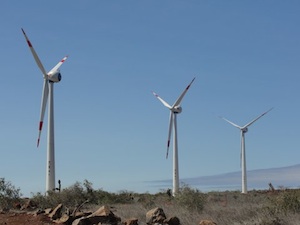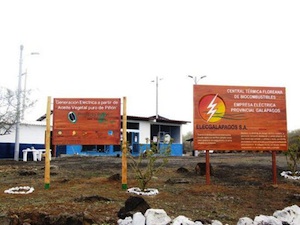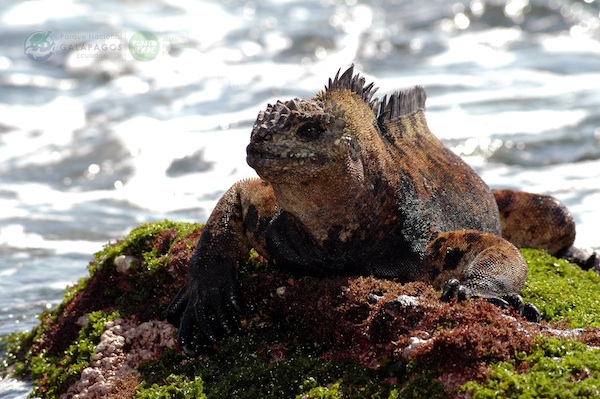Zero fossil fuels on the Galapagos Islands
Situated in the Pacific Ocean some 1,000 km from the South American continent, these 19 islands and the surrounding marine reserve have been called a unique ‘living museum and showcase of evolution’. The Galapagos Islands, officially called Archipiélago de Colón, were inscribed on the World Heritage List in 1978 and declared a Biosphere Reserve in 1984.
В 2007, the government of Ecuador launched the “Zero fossil fuels on the Galapagos Islands” initiative, planning to phase out the consumption of fossil fuels at the Galápagos Islands by the year 2015. During these years, a diverse range of projects on the use of different energy sources (wind power, solar PV, and biofuels), have gradually been developed, including actions related to energy efficiency and training.
The ERGAL project (Возобновляемые источники энергии для Галапагосских) coordinates the implementation of renewable energy projects at the archipelago of Galápagos. These projects contribute to the Government Zero Fossil Fuels for the Galápagos Initiative executed by the Ministry of Electricity and Renewable Energy, and rely on the support of UNDP and the Global Environmental Facility (ГЭФ).
The Observatory of renewable energies in Latin America
The Galapagos experience is based on a wide range of projects in different parts of the archipelago that are paving the way towards energy self sufficiency.
Renewable Energy will gradually phase out fossil fuels in the electricity generation of Santa Cruz/Baltra and will gradually replace gasoline utilization in the transport sector. The Baltra wind farm (2.25 МВт) generates power for the neighbouring island of Santa Cruz, which has the highest energy demand within the Galapagos Archipelago.The country’s first large-scale wind project (2.4 МВт) was funded and implemented by the Global Sustainable Electricity Partnership. In operation since 2007 on the island of San Cristobal, it meets nearly a third of the electricity demand of the island.
Another dimension of the project regards the use of solar energy (фотоэлектрических) to replace diesel consumption at the islands of Isabela and Floreana, and to complement wind energy contribution in the Santa Cruz/Baltra system.
The initial project on Floreana was funded by the Spanish Agency for International Cooperation, the Galapagos National Park, the local Council of Floreana, and ERGAL. After its launch in 2004, the reported fuel saving has been of 35%.
Isabela Island will have a photovoltaic-diesel hybrid system with a capacity of 3.3 МВт. Более того, in cooperation with BMZ, a PV power plant of 1.1MW is being developed, aiming to reach 100 % renewable power supply in combination with a 1.2 МВт (dual-fuel) thermal power plant, и 0.9 MW in batteries.
Biomass is also integrated into ERGAL’s strategy through biofuel production from the Jatropha nut (piñón) to fuel small diesel generators on the islands. The“piñon oil energy program” has been so successful on Floreana that they are considering expanding it to the town of Puerto Villamil on the island of Isabela. It relies on the support of the Deutsche Gesellschaft für Internationale Zusammenarbeit (GIZ) GmbH
The original renewable islands plan included large scale energy efficiency in the form of cogeneration with a new thermal power plant in Baltra and in small scale applications in the form of domestic energy efficiency measures.
Climate change is a complex issue which..
The ambitious targets of ERGAL and the “Zero fossil fuels on the Galapagos” initiative can only be achieved when the implementation of the different project components is accompanied and actively supported by a special targeted training of the stakeholders, the administration on regional and municipality level and the political decision makers.
Although the geographical boundary of the project is limited initially to the four inhabited Galapagos Islands (San Cristobal, Floreana or Santa Maria, Santa Cruz/Baltra, Isabela) the project is expected to have a substantial impact on the development of non-conventional (возобновляемый) energy technologies in the whole country and, eventually, in the region. In this sense, the project is conceptualised as a laboratory for testing different alternative options for renewable energy technologies like wind/ PV/ biofuels.
Galapagos strategy is a reference to the UNESCO sites for its capacity to generate projects in cooperation with several countries, агентства, and companies in the renewable energy sector. It stands out for its potential to share experiences, as demonstrated by the project with Mali, started from the biomass experience. В конце концов, it is a model of cooperation in favour of renewable energies in a paradise of biodiversity on the planet.


















